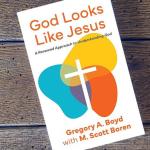Paul ends 1 Corinthians (16:22) with a neat chiastic sign-off. Anyone who does not love the Lord is declared “accursed” ( anathema ) and Paul follows this with the cry of maranatha (“the Lord comes”). Anath-ma/mar-anatha . Substantively, it is a striking phrase. Anathema speaks a harsh word of judgment; maranatha is, as it were, the Bride’s cry for her Lord to come (cf. Revelation 22:17-20). It is, as it were, the last word of the Song of Songs... Read more














